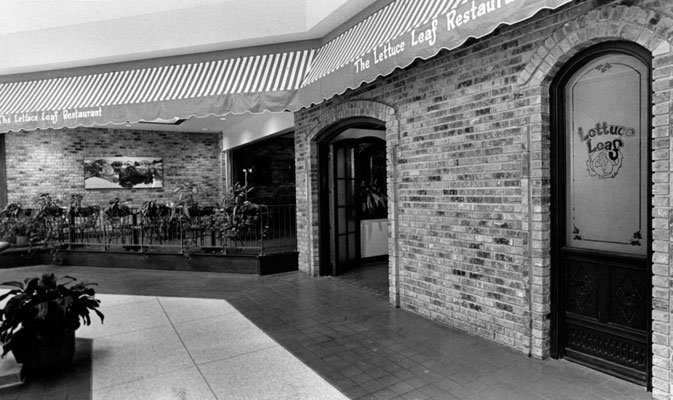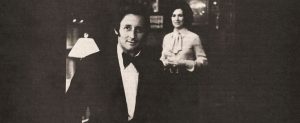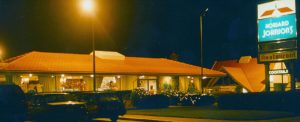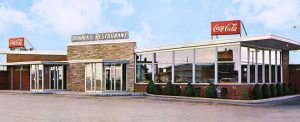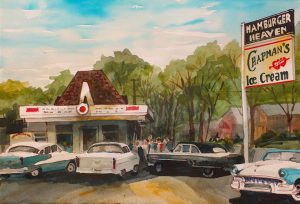Lost Tables | Remembering The Lettuce Leaf
Published July 3, 2021
Have you ever wondered what happened to that restaurant you once loved and have memories of dining at with your family and friends? We did! There is an amazing website called Lost Tables, dedicated to celebrating the restaurants of our past. We are partnering with the site’s creator Harley Hammerman and celebrating these wonderful stories. Hammerman and his wife Marlene are members of Shaare Emeth, and she is past president of the National Council of Jewish Women of St. Louis. Visit Lost Tables on Facebook
William Kenneth Saigh was born in Kewanee, Illinois. He earned a Ph.D. in business administration from St. Louis University. In 1976, after teaching marketing to college students for 21 years, he took a sabbatical from St. Louis University and opened a restaurant.
Saigh’s restaurant at 7823 Forsyth in Clayton – the Lettuce Leaf – served salads as entrées. It was a novel concept at the time and was met with skepticism by the established restaurant community – and the 17 banks that turned down Saigh’s loan request.
“The banks chuckled. Other restaurant owners chuckled. They were counting the days until we would close our doors,” Saigh remembered.
Not only did Saigh not close his doors, but he opened a second Lettuce Leaf restaurant the following year at 107 North Sixth Street in downtown St. Louis. Another was opened in Kansas City in 1978, a fourth in 1980 at Westport Plaza, and a fifth in 1984 at Crestwood Plaza.
The Saighs had always enjoyed salads for dinner at home. The idea for the Lettuce Leaf was born over a dinner with friends when Saigh wished aloud that he could eat that way at restaurants. A friend suggested the name, and the Saighs pursued it.
“My wife Christine and I started eating less animal fats in our diet,” he recalled. “So we found it lots of fun to create salads. We also had a great garden that year to experiment with – lots of broccoli, zucchini, cauliflower, and eggplant. So we just threw things in bowls and had lots of fun. And when we served our concoctions to our guests, they loved it. The opportunities for making salads are endless.”
The Lettuce Leaf restaurants were carefully planned, from the ambiance and menu to the targeted clientele, whom Saigh described as the “intellectually affluent.” He reasoned he had two potential markets. “We’re drawing from graduates of fast-food restaurants, the people saturated with grease and potatoes, and also from the other end of the spectrum.” The other end, he said, were the people tired of paying expense-account prices for gourmet food.
The restaurants had elegant atmospheres, with classical music playing in the background, which served to reinforce the customer’s feeling they were eating at a nice restaurant, despite the moderate prices. According to Saigh, the decor was “supposed to give you a feeling of light, airy space. We have torn down many walls to let in light in many of our restaurants.”



